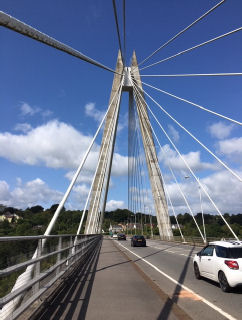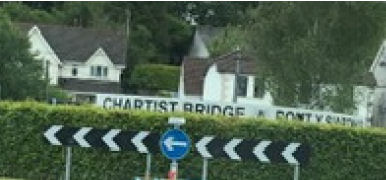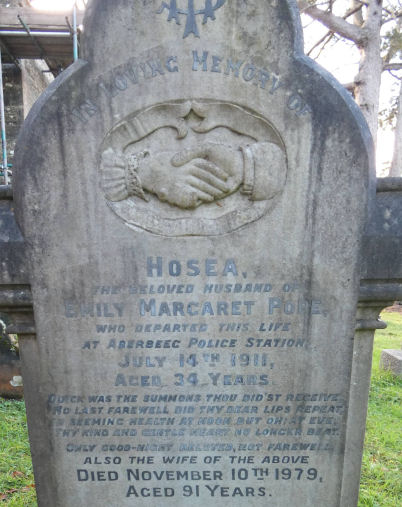Dates for your Diary
Closed until further notice.
Museum opening times
Closed until further notice.
100 Club
Suspended pending re-opening of museum.
Annual Membership Reminder
This has been a difficult year for everyone, not least the museum, and has meant we have had to stay closed for most of it. We have received a grant which has enabled us to pay our running costs but we still need our members support at this difficult time. Therefore if you are able to renew your annual membership of £6 for standard membership and £25 for Vice Presidents then we would be most grateful. Cheques made payable to Abertillery & District Museum can be posted to ADMS, Market Street, Abertillery NP13 1AH. Also, if you are a taxpayer and have not yet done so, signing a Gift Aid declaration can enable us to claim another 25p for each pound given at no extra cost to you. If you require a Gift Aid form, please email the museum at abertillerymuseum@btconnect.com or use the telephone numbers on this page to connect one of our volunteers. Thank you for your continued support.
2020 – Annus Horribilis
At last 2020 is drawing to an end and it can’t come soon enough for me. When I wished all our readers a Happy New Year on 1st January, little did I know what lay ahead. Never in this lifetime did any of us expect to endure such draconian restrictions on our daily lives and, with instructions to stay within county borders, those restrictions have been particularly severe right here in Wales.
While I have every sympathy for those who have lost their lives, my heart goes out to those who have lost their livelihoods and, as a consequence, maybe even their homes thanks to an economy decimated.
To coin a latin phrase once used by Her Majesty; 2020 has been an ‘annus horribilis’ on an unmatched scale; a bad dream from which there is no awakening. Only those among us who lived through the Second World War will have experienced anything worse than this. In a year where I have spent more on car road tax than I have on petrol, I am pleased to say thank goodness this year is coming to an end. Good riddance 2020 and all speed 2021 and hopefully an end to this living nightmare. Here’s hoping for a good Christmas and a better year ahead.
AGM Saturday 5th December 11am
In this ever-changing landscape and with new Welsh regulations for museums to close, it has been decided that the AGM scheduled for this Saturday cannot go ahead as planned. We therefore ask you to complete the nomination form you have received by post and return it to the museum by 11am Saturday morning. Apologies for any inconvenience this may cause.
The Chartist Bridge
Blackwood is a town built on two sides of the Sirhowy River. With my sister living one side of the river, and me the other, we welcomed the news that a bridge was going to be built linking both sides of the town. The bridge would be named ‘The Chartist’ and this month it celebrates its 15th birthday.
 Part of the Sirhowy Enterprise Way regeneration project, it opened on 3rd December 2005, four months ahead of schedule.
Part of the Sirhowy Enterprise Way regeneration project, it opened on 3rd December 2005, four months ahead of schedule.
The bridge, which was designed by the Arup Group, links the east and west sides of the Sirhowy Valley. It is 750 feet long and is supported by cables attached to a 295 feet ‘A’ frame pylon which rises 100 feet above the valley floor. At the top of that pylon, a red light flashes as a warning to low-flying aircraft.
The people of Caerphilly were asked to name the bridge and the name chosen from the suggestions was ‘The Chartist’ after the Chartist struggle  and their march to Newport in 1839. Subsequently, a statue to represent the marchers was erected at the east side of the bridge, pointing in the direction of Newport. At the west end of the bridge is a name plate.
and their march to Newport in 1839. Subsequently, a statue to represent the marchers was erected at the east side of the bridge, pointing in the direction of Newport. At the west end of the bridge is a name plate.
I live on the east side of the bridge and my sister on the west. Before the bridge opened, to visit each other meant either a five mile detour via Pontllanfraith or alternatively, a one mile detour via a single track, very steep, rough lane known locally as ‘The Rhiw’. This steep, 1 in 4, lane went down to the valley floor, over a small humpback bridge and rose equally steeply the other side. I remember at one point, this narrow lane levelled off and then dropped so steeply it felt like you were driving over the edge of a cliff!
Despite this the Rhiw was very well used as it was so much quicker than the alternative. So it was with much gratitude that my sister and I welcomed the opening of the Chartist Bridge with its very impressive design; almost like having our very own mini ‘Severn Bridge’ but without any tolls!
Sally Murphy

The west side name plate.
Draco the Lawgiver
This year I have lost count of the number of times I have heard the word ‘draconian’ used by politicians and journalists alike in reference to the restrictions which we are currently living under; I used it myself on page one. We all know what the word means, ‘harsh, severe, extreme’ but where did the word originate?
It refers to an ancient Greek known as Draco (also known as Drako or Drakon) who was born in 650BC and who became the first recorded legislator of Athens in ancient Greece. He was appointed democratically by the citizens of Athens and tasked with replacing their system of ‘oral law’ with a written code enforced by a court of law. However the people were taken aback by the unfairness and harshness of his law.
So that no-one could claim ignorance of the laws he laid down, the laws were carved into wooden or concrete monuments and put on display; this could perhaps be said to be the origin of the saying ‘written in stone’. The laws carried extreme punishments which varied depending on your status. For example, if a person owed a debt to a wealthier person and was unable to repay the debt, the debtor was forced into slavery. However the punishment was much more lenient if it was the other way around. Most other crimes, including petty theft, were punishable by death. It is said that when asked why most crimes carried the death penalty Draco is said to have replied that he considered these minor offences to deserve such punishment and that he had no greater punishment for more important ones. Athenians, fed up with his harsh laws, eventually forced Draco to flee to a nearby island, Aegina, where he lived the rest of his life in exile. Politicians beware!
Sally Murphy
SUSPENDER BELTS
I am old enough (just) to remember the days before tights. Pre-tights days meant suspender belts and stockings. I particularly remember two suspender belts as they were very pretty – one was white with little pink rosebuds embroidered on it and the other was lemon with lemon embroidery. They may have looked pretty but they were incredibly uncomfortable to wear. Once you had hooked the suspenders onto your stockings, tight enough to stop sagging and bagging, the stockings pulled the suspender belt down from your waist towards your hips and boy was it uncomfortable! It invariably left a mark – a ‘suspender belt line’. The things we did in the name of fashion!
It was such a relief when tights came on the market although they were a world away from today’s tights. The first tights were expensive and they laddered easily. Mine ended up covered with little nail varnish dabs to stop the ladders running. The early tights were less stretchy than today’s tights so they were inclined to bag a bit and the sizing was rather unpredictable and so they could be too long (Nora Batty syndrome) or too short. I don’t know which was worse. The too-long tights looked awful while the too-short ones meant they didn’t reach your crotch as they should.
I see on the internet that suspender belts are still widely available although they tend to be on sale on sites selling, shall we say, lacy (racy?) undergarments. I will stick to tights!
Jen Price
Pantomimes
Thanks to the pandemic the great British tradition of the pantomime is under threat this Christmas. It wasn’t until I read a newspaper article by Gyles Brandreth back in June, that I realised just how quintessentially British the pantomime is. Yes they are performed in other parts of the world such as Australia and Jamaica but these are Commonwealth countries and they got their love of panto from us. As Gyles went on to point out, ballet, opera, and theatre happen the world over but panto is our unique contribution to world culture.
Panto has evolved over two centuries, though the modern panto dates to Victorian times and starred the music-hall entertainers of their day. With no TV, music-halls were very popular, and pantomimes based on popular fairy tales with lots of slapstick comedy, gender cross-dressing and audience participation was guaranteed to get the laughter. Today, pantos are associated with Christmas and New Year and this Christmas just won’t be the same without them with some theatres not surviving. It’s not all bad news though as some pantomimes will go ahead thanks to Camelot, the National Lottery Operator, which has offered to step in and buy up seats forced to stay empty due to reduced seating capacity.
I will be honest and say I have never been a fan of panto, it is too ridiculous for my taste. Pantomime ‘Dames’ in garish fancy dress with huge wigs and over-painted faces is not remotely funny to me but it is part of our tradition and is loved by so many which is why I shall be lamenting its loss this Christmas and wishing the industry a speedy recovery. Oh yes I shall!
Sally Murphy
What3Words
In the September 2019 edition of this newsletter I urged readers with ‘smart phones’ to download an app called What3Words. This app can locate your position to within 3 by 3 square metres anywhere in the world and is not dependant on internet access. Gwent Police are now urging everyone to download and install this app so if you haven’t already done so, do it today. One day it may save your life! For more information visit www.knowexactlywhere.com
The Ghost of Hosea Pope
Watching a televised ghost story on Christmas Eve has been a tradition in my home for more years than I care to remember. I don’t know where the connection between Christmas and ghost stories originates; perhaps it’s due to Charles Dickens and his tale ‘A Christmas Carol’ but whatever the reason, when one of our museum volunteers, Jen Price, stumbled upon an intriguing headstone at St Peters Church at Llandevaud, Newport, it led to the uncovering of a local ghost story which I thought, with Christmas around the corner, would make for an interesting read…
Since the 1950’s there have been many reports of a gentleman wearing a dark, old-fashioned looking cloak and a tall hat walking along on a stretch of the A4046 at Aberbeeg, only to vanish moments later. One such report occurred in 1980 when a local man encountered a cloaked figure in a top hat who looked him straight in the eye. The cloaked figure pulled out a pocket watch, glanced at it and then hurried on his way. Intrigued, the man followed only to see the figure evaporate into thin air!
Research has shown that a death did actually occur on a stretch of the A4046 at Aberbeeg and it happened on 14th July 1911 at around 11pm. The story goes that thirty-four year old Police Constable Hosea Pope, based at Aberbeeg police station, was on patrol along that stretch of road when he encountered a well-known local drunk, James Wise. Wise was throwing stones around and so Pope tried to arrest him but a struggle ensued. During the struggle Pope collapsed and was later pronounced dead by a local doctor by the name of Kemp who thought the police constable had died from a heart attack. The scuffle had been witnessed by a bystander and, despite the cause of death as given by Dr Kemp, James Wise was found guilty of manslaughter and sentenced to five years in prison. Meanwhile, Hosea Pope was buried at St Peters Church and was survived by his wife Emily, who went on to live to the ripe old age of 91 and is now buried with him.
Whether PC Pope is still pounding his beat we will never know for sure though the descriptions of the ghostly figure seen on that stretch of the A4046 are certainly in line with the police uniform of the day. One thing we can be certain of though is that Hosea Pope was a serving police officer with Monmouthshire Constabulary (later to be renamed Gwent) and his name and the circumstances of his death can be found on the Gwent Police ‘Roll of Honour’.
So next time you find yourself on that stretch of road, keep an eye out for PC Pope and if you see him, do let me know!

The grave of Hosea Pope as taken by Jen Price.
The grave’s inscription reads:-
In loving memory of Hosea
The beloved husband of
Emily Margaret Pope
Who departed this life
At Aberbeeg Police Station,
July 14th 1911, aged 34 years.
Quick was the summons you did’st receive,
No last farewell did thy dear lips repeat,
In seeming health at noon, but oh! at eve,
Thy kind and gentle heart no longer beat
Only goodnight beloved, not farewell.
Also the wife of the above
Died 10th November 1979 Aged 91 years.
For more information on this story and for more eye witness sightings of Hosea, check out this link; http://www.strangedayz.co.uk/2008/08/ghost-ofpc- hosea-pope.html
Sally Murphy
Thanks to Jen Price for bringing this to my notice and for the above photograph.
Top Of Page
